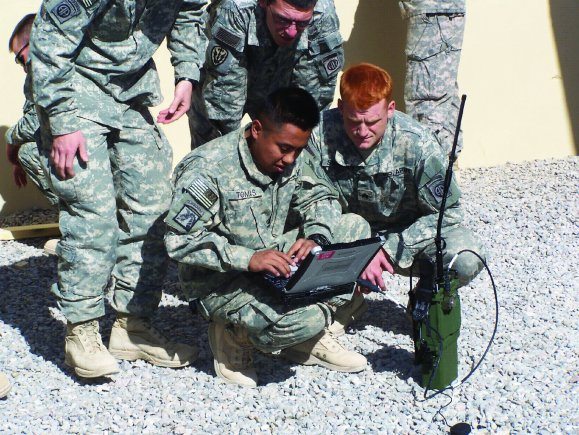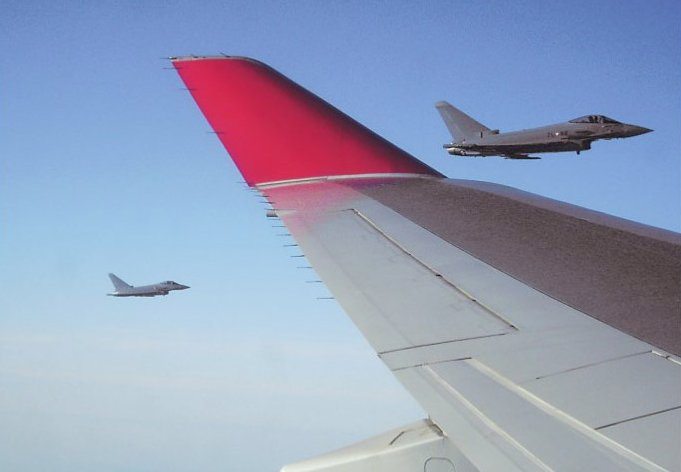As the Army focuses on its number-one priority of modernizing the network, its first networking waveform radio continues to enhance communications at the tactical edge.
Expanding its fielding efforts, Product Manager Network Systems, known as PdM NS, which is assigned to the Army’s Program Executive Office Command, Control and Communications-Tactical, or PEO C3T, awarded a $66 million contract to Harris Corporation, Melbourne, Fla. on Sept. 30 for the procurement of eight Brigade Combat Teams worth of AN/PRC-117G radios.
These radios will support the modernization of brigade combat team tactical communications and the LandWarNet/Battle Command G3/5/7 validated requirement to field the AN/PRC-117G radios to eight Infantry BCTs in the first quarter of fiscal year 2013.
“This radio sends critical information to Soldiers when they need it the most,” said Lt. Col. Troy Crosby, product manager for NS, which manages the radios. “It provides the dismounted Soldier with a means to relay information from the battlefield to a command post, in real-time.”
The AN/PRC-117G radios are also playing a key role in the Army’s second Network Integration Evaluation, or NIE 12.1, which runs from Oct. 31 to Nov. 19 at Fort Bliss, Texas, and White Sands Missile Range, N.M. More than 3,800 Soldiers of the 2nd Brigade, 1st Armored Division will participate in NIE 12.1.
In October 2009, PEO C3T first fielded the radios to the 4th Brigade of the 82nd Airborne Division in Afghanistan in response to an Operational Needs Statement, which is a process that allows urgent requests from theater for equipment or resources to be identified and rapidly fielded. Since the initial fielding, more than 2,300 AN/PRC-117G radios have been fielded to units in Afghanistan. Today, the radios are helping those units expand communications networks that were previously restricted to fixed sites.
The wireless AN/PRC-117G radio can simultaneously transmit voice and data. It allows troops to exchange large amounts of tactical data, such as video and biometrics. The radio can support small-unit operations and connect the tactical edge with forces at company-level and above.
This commercial, off-the-shelf single-channel radio provides wideband networking capability and interoperability with fielded waveforms. It is also interoperable with legacy radios. It’s 30 percent smaller and 35 percent lighter than currently fielded multiband manpack radios.
“The enemy in Afghanistan might lack the state-of-the art technology that we field, but they adapt their tactics constantly,” Crosby said. “Soldiers in the Army’s lowest tactical formations can pass data and information utilizing the AN/PRC-117G as a flexible tactical network backbone. The tactical network allows timely decisions by leaders at the critical point of an engagement.”
Since every unit has its own unique mission, they employ the radios according to their own needs. The radios are commonly used in command vehicles and for military intelligence, yet they can be used all the way down to the reconnaissance scout. To easily adapt to varying mission requirements, the AN/PRC-117G comes in three configurations — manpack for the Soldier on foot, a vehicular configuration for platforms such as Multipurpose All-Terrain Vehicles, and a configuration for Tactical Operations Centers, or TOCs.
“If a unit is going around kicking in doors, they will use them as manpack,” said Michael Mercurio, fielding and training branch chief for PdM NS. “They can equip everyone in a squad with them, and then go out and talk around buildings nearby.”
The radios are utilized for everything from simple voice communication to trafficking large data files. Soldiers often hook up their laptops to the radios and use the chat software, while military intelligence can use the AN/PRC-117Gs to pass real-time, full-motion video. Biometrics data can be passed back and forth to ensure Soldiers are detaining or capturing the right people.
“We have seen them used every step along the way, from the foot Soldier all the way to the convoy and combat logistics controls,” Mercurio said. “It’s a very flexible system.”
Since the AN/PRC-117G is a software-defined radio, it can run nine different waveforms, one at a time, including the Advanced Networking Wideband Waveform or ANW2, Single Channel Ground and Airborne Radio System known as SINCGARS, and the Soldier Radio Waveform, or SRW.
“The fact that one radio condenses into various waveforms and can perform the functions of four or five other radios alone is a great asset,” Mercurio said.
The ANW2 provides a data link between the TOC and vehicles, with up to 30 radios in a subnet. It provides simultaneous IP data and voice with integral situational awareness.
“ANW2 is a self-healing, robust, IP-driven waveform that maximizes redundancy and limits single point failures and networks,” Mercurio said.
PdM NS continues to test and expand the capabilities of the AN/PRC-117G radios. The PdM recently conducted testing utilizing the radio in the network’s aerial tier and evaluated its performance with the Counter Radio Control Improvised Explosive Device, or RCIED Electronic Warfare, or CREW, system, which combats IEDs.
At NIE 12.1, evaluators will establish and evaluate the bridge network that connects the SRW with the ANW2. Soldiers on foot using the handheld JTRS Rifleman Radio that utilizes SRW, will be able to communicate to company-level Soldiers in vehicles with the AN/PRC-117Gs that are utilizing ANW2. In essence, the bridge will allow SRW and ANW2 to “talk” to each other, so the two different radios can pass data back and forth.
Capt. Luis Albino, commander of C Troop within 1st Squadron, 1st Cavalry Regiment in 2/1 AD, said his unit will use the 117G radios during NIE 12.1 to transmit information over the network between ground troops who are carrying the Rifleman Radios, his leadership team, and higher headquarters. They will transmit voice, text, and pictures during missions including raids and route reconnaissance. Exchanging that information in near real-time significantly improves the company commander’s situational awareness and rapid execution during operations, he said.
“The data will come straight to me with pictures,” Albino said. “I’m far from the scout that is actually seeing the objective, but if I can see what he’s seeing, I can make a decision just very quick. (And) my higher will be able to get that same picture.”
As part of the “bridge” architecture for Capability Set 13-14, the 117G Harris ANW2 20-30-node Mobile Ad-Hoc Networking, or MANET configuration, is being evaluated at the NIE 12.1, as it was in the first NIE, known as NIE 11.2. A MANET is a collection of wireless nodes that can dynamically form a network to exchange information without the need for pre-existing fixed network infrastructure. Range, throughput, scalability and other metrics will be collected from this MANET network.
To connect the dismounted Soldier to the network, the SRW capability of the AN/PRC-117G radio will also be evaluated during NIE 12.1. The Warfighter Information Network-Tactical, or WIN-T network — the Army’s tactical communications backbone — sits a tier above the ANW2 network. The upper tier WIN-T network pipes ANW2 traffic through various means, whether it’s a WIN-T vehicle equipped with an AN/PRC-117G, through a Secure Internet Protocol Router/Non-secure Internet Protocol Router, or SIPR/NIPR, Access Point, or SNAP satellite terminal, or through a commercially purchased High Capacity Line-of-Sight radio. In each case the ANW2 traffic is bundled and transmitted through the WIN-T network, ultimately connecting the Soldier on foot to the greater Army network.
“In the end state, once they get all of these tiers operating together, a Soldier with his small Rifleman radio in the middle of nowhere can conceivably talk all the way back to the Pentagon,” Mercurio said. “He could literally plug into anywhere in the world using the WIN-T network.”











